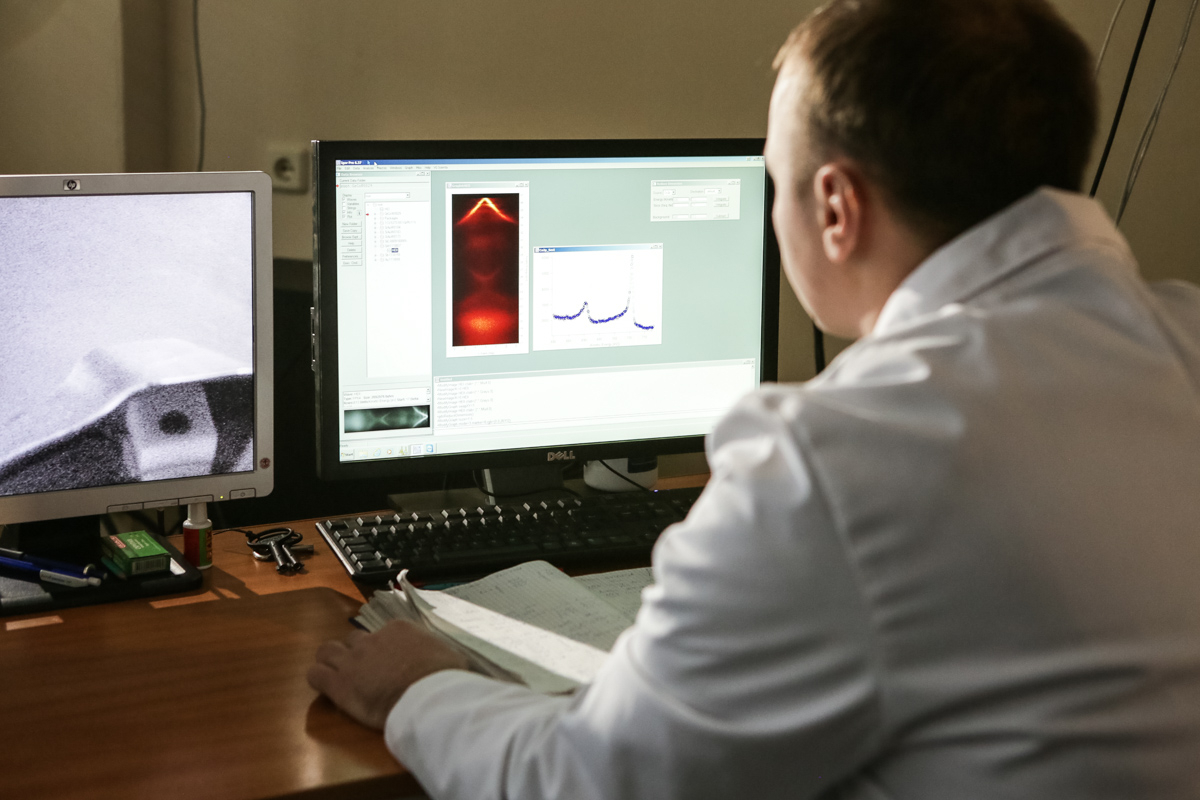Graphene with properties of magnetic gold: SPbU scientists
The scientists from St Petersburg University, Tomsk University, Germany, and Spain have for the first time modified graphene in such a way that it has the properties of cobalt and gold: magnetism and spin–orbit interaction. This advance can benefit quantum computers.
The study is published in Nano Letters, that is a monthly peer-reviewed scientific journal published by the American Chemical Society.
Graphene is an extremely light and super-strong material very high electrical conductivity. When it interacts with cobalt and gold, it preserves its unique properties and partially adopts the properties of cobalt and gold: magnetism and spin-orbit interaction. The graphene was for the first time modified to adopt such fundamental properties in the Laboratory of Electronic and Spin Structure of Nano-Systems at SPbU directed by Doctor of Physics and Mathematics Evgenii Chulkov and in the Laboratory of Physical Electronics directed by Doctor of Physics and Mathematics Aleksandr Shishkin.
“The spin of an electron is a “magnet” induced by the spin of the electron around its axis, — said Aleksandr Shishkin. — It also orbits the nucleus to produce electric current and therefore a magnetic field. The interaction between the “magnet” and magnetic field is a spin-orbit interaction. Unlike in gold, the spin-orbit interaction in graphene is extremely small. The interaction between graphene and gold increase spin-orbit interaction in graphene, while interaction between graphene and cobalt induces magnetism”.
The research and preparing materials for submission to publication took three years, said the forst author of the article, Director of the Resource Centre “Physical Methods of Surface Investigation” at the SPbU Research Park, Candidate of Physics and Mathematics Artem Rybkin. The scientists synthesized and then studied a new system that comprises clearly structured graphene on the magnetic layer with ultra-thin layers of the atoms of gold between them.
“Mostly, the experiments were carried out using the NanoLab, — said Artem Rybkin. — As a result, we proved that by using our equipment we can carry out all the stages of the experiment: from synthesis to testing the properties of the new system”.
Publication of the article is not the only aim for the scientists: they are planning to study graphene to use it in spintronics that is the study of the intrinsic spin of the electron and its associated magnetic moment, in addition to its fundamental electronic charge, in solid-state devices.
Director of the Resource Centre “Physical Methods of Surface Investigation” at the SPbU Research Park Artem Rybkin
The advancement was highly appreciated by the head of the project “Spintronics” of the Russian Quantum Centre Anatolii Zvezdin: “Nanoelectronics, or spin-orbitonics, is at the forefront of the fundamental and applied science globally. There are new memory elements, logical elements, neuromorphic devices. They are driven by pure spin current, that is a flow of spins without accompanying a flow of electrical charges. It makes the SPbU’s study especially valuable as it opens up new horizons in using new properties of graphene in last generation of the the spin-orbit devices to increase their efficiency and effectiveness”.
The magnetic spin-orbit graphene can be used in improving the quantum computers, said Artem Rybkin. Today, the set of the elements of information (cubits) in quantum calculations are based on cold atoms and superconducting transitions. Speed remains the main challenge in improving the quantum computers: cubits, as they interact with the environment, are not quick to perform operations and save the results. Among the possible solutions are cubits based on the new “quantum” materials synthesized from magnetic spin-orbit graphene.
Apart from the scientists from SPbU and Tomsk University, the study was conduced by the scientists from the Max Planck Institute , Germany, and University of the Basque Country, Spain.



